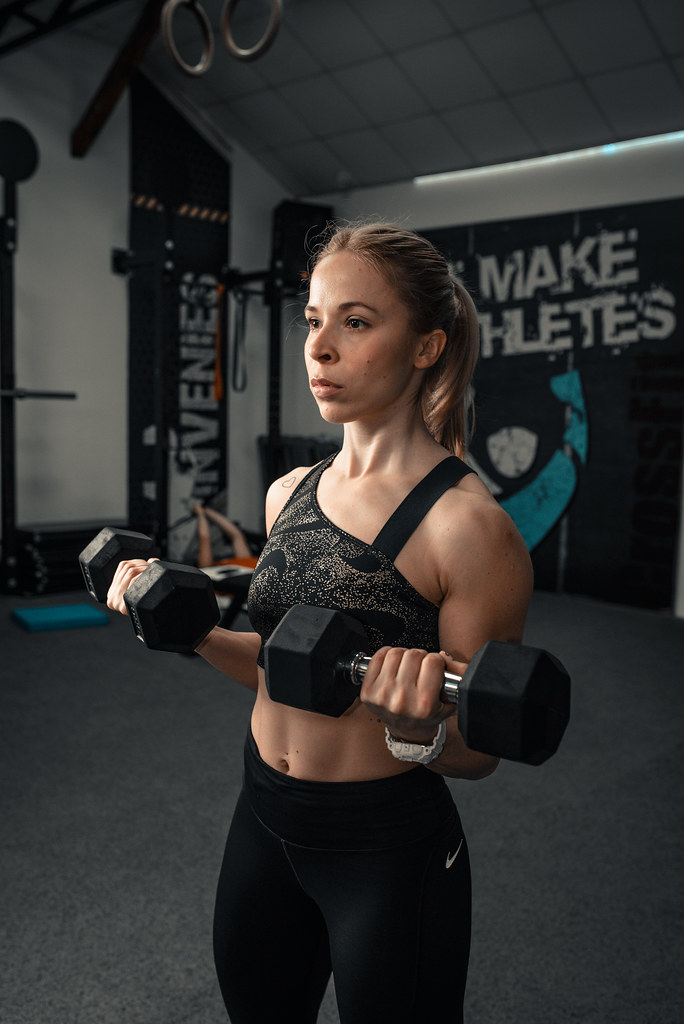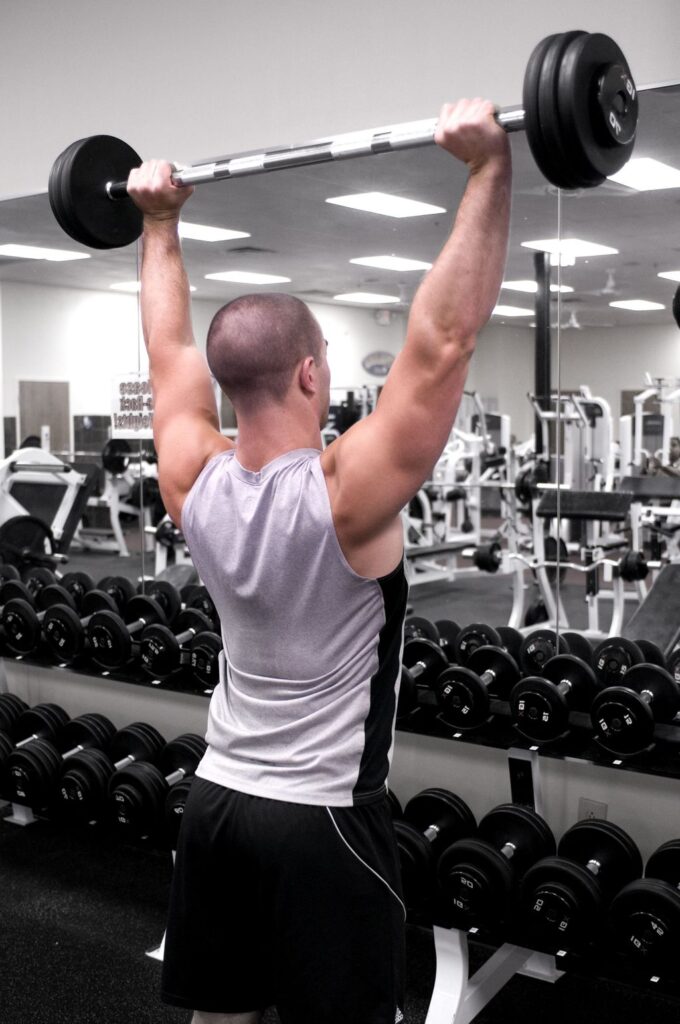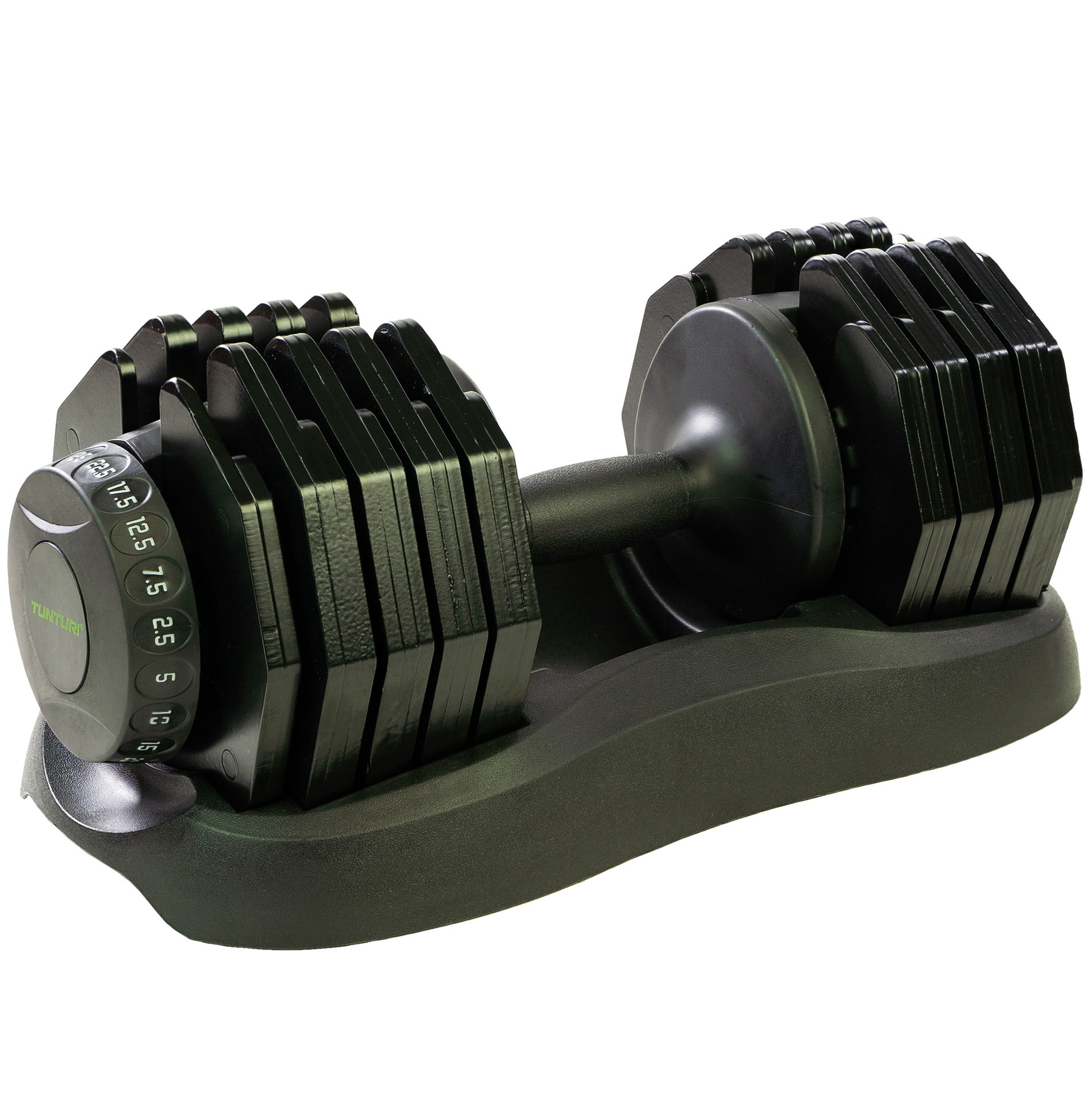
The words “strength training” often conjure images of barbells, heavy plates, and the serious pursuit of muscle in a gym. And while lifting heavy things certainly builds muscle, the essence of strength, as we understand it, extends far beyond just visible bulk. It’s about resilience, power, and the foundational capability to handle life’s physical demands, both inside and outside the gym.
As a strength coach deeply committed to helping individuals achieve their peak potential, I often emphasize that a truly powerful physique is built on a foundation of healthy, robust joints and functionally strong muscles. This principle holds especially true for the shoulders, which are crucial for nearly every upper body movement and play a pivotal role in overall physical prowess. Developing strong, healthy deltoids isn’t just about looking good; it’s about optimizing performance, preventing injury, and enhancing your ability to engage with the world.
While the pursuit of bigger delts might lead many to focus on a few common exercises, our approach is more comprehensive and strategically designed. Today, I’m sharing my exact 5-move blueprint for building shoulders that are not just big, but brutally strong and incredibly resilient. This isn’t just a workout; it’s a strategic plan that targets every part of the deltoid while fortifying the entire shoulder joint. We’ll also touch on some immediate, tangible benefits that begin to manifest when you commit to this kind of focused, intelligent strength work.

1. Overhead Press: The Foundation for Raw Power
Every truly great shoulder workout, in my book, starts with the Overhead Press. This movement isn’t just an exercise; it’s your primary strength builder, a litmus test for raw pressing power and total-body coordination under load. It’s the cornerstone upon which all other shoulder development is built, engaging a multitude of muscles to hoist weight directly above your head.
The way you execute this powerful lift can and should be tailored to your specific goals. If you’re someone aiming for the robust, full-body stability required in strongman competitions, the standing barbell version is your go-to. This variation forces your entire core and lower body to engage, creating a unified pillar of strength that drives the weight upwards, truly building total-body command.
For those who might be more focused on powerlifting or bodybuilding, especially if you experience achy shoulders from consistent benching, a strategic switch to a seated press on a 70-degree incline can be a game-changer. This seated position provides invaluable back support, allowing you to zero in on the deltoids and triceps with less compensatory movement. The overarching goal remains the same: to move heavy weight with pristine, good form, ensuring maximum stimulus to the target muscles while minimizing injury risk.

2. Upright Row (with a gap): For That Cannonball Width
To truly achieve that coveted wide, “cannonball” shoulder look, you absolutely have to hammer the medial, or side, deltoids with precision. Many lifters incorporate the Upright Row, but to truly make it effective for side delt development, there’s a critical technique change you absolutely must implement. It’s a subtle tweak that makes all the difference in where the tension is directed.
Instead of pulling the bar tight against your body, you need to maintain a deliberate gap, keeping the bar approximately 3-4 inches away from your torso throughout the movement. This seemingly small adjustment is vital for an effective shoulder workout because it shifts the tension. By creating that space, you strategically redirect the effort from primarily engaging your traps directly onto your side delts, forcing them to do the heavy lifting.
This focused activation is what creates real width through the shoulders. While the traps will still be involved to a certain degree, this technique ensures they don’t overpower the movement, allowing your medial deltoids to get the concentrated work they need for significant growth and that broad, rounded aesthetic. It’s a subtle refinement, but it delivers a big payoff in terms of targeted development.

3. Dumbbell Lateral Raises: The Hypertrophy Driver
Once we’ve established foundational strength with the Overhead Press and targeted medial deltoid width with the specialized Upright Row, it’s time to double down on hypertrophy. This is where the classic Dumbbell Lateral Raise comes into play, a movement renowned for its ability to isolate the side delts and create significant muscle growth when performed correctly and with the right intensity.
The key to maximizing the effectiveness of Lateral Raises for those “cannonball” shoulders is to perform them for higher repetitions. This approach isn’t about moving maximal weight; it’s about creating ample time under tension. By focusing on higher rep ranges—think 12 to 15 or even more—you engorge the muscle with blood, creating that intense pump that is so crucial for driving cellular growth and adaptation.
This specific application of time under tension and volume is what truly forces the medial deltoid to grow, contributing directly to that full, rounded shoulder shape. It complements the earlier exercises by providing a different type of stimulus, pushing the muscle to its limits through sustained effort. When performed with control and a focus on the squeeze at the top, Lateral Raises are an indispensable tool for sculpting truly impressive delts.

4. Face Pulls (to the chin): Correcting Imbalance and Enhancing Posture
One of the most common issues I see in lifters, particularly those who spend a lot of time on pressing movements like bench presses, is an imbalance between their front and rear deltoids. This often results in overdeveloped front delts and significantly underdeveloped rear delts, which not only leads to poor posture – think rounded shoulders – but also creates an incomplete, unbalanced look to the physique. We aim to fix this imbalance and create a harmonious, powerful upper body with Face Pulls.
However, just like with the Upright Row, technique is absolutely everything when it comes to Face Pulls. To properly isolate and activate the rear deltoids, you must pull the rope towards your chin, ensuring that your elbows remain level with the floor throughout the entire movement. This specific pulling angle and elbow position are critical for directing the tension precisely where it’s needed – to the posterior deltoids.
If you mistakenly pull the rope towards your chest or your forehead, you’re missing the target muscles for this specific workout component. Pulling towards the forehead, for instance, tends to engage the side delts, which we’ve already comprehensively worked. By adhering strictly to the “pull to the chin, elbows high” cue, you effectively isolate the rear delts, along with the mid traps and rhomboids, leading to improved posture, better shoulder health, and a more balanced, powerful upper back. This movement is all about efficiency and precision, ensuring every rep counts towards correcting imbalances and building comprehensive shoulder strength.
5. Plate Around the Worlds: Stability, Resilience, and Full Range of Motion
To truly round out this comprehensive shoulder blueprint and ensure long-term health and resilience, we finish with a unique and highly effective movement: Plate Around the Worlds. This isn’t a traditional heavy lift; rather, it’s an exercise designed to build stability, control, and strength through a full range of motion that often goes untouched by more conventional pressing and raising movements. It’s an investment in the longevity and functionality of your shoulder joint.
Traditional lifting, while excellent for building raw strength and hypertrophy, sometimes neglects the intricate stabilizing muscles and the extreme end ranges of shoulder motion. Plate Around the Worlds fills this gap by challenging your deltoids and rotator cuff muscles in a circular, controlled pattern. This unique movement helps to improve proprioception and strengthen the joint through its entire articulation, making it less susceptible to injury.
Holding a plate and moving it in a circular path around your head demands constant tension and precise muscular control from all three heads of the deltoid, as well as the surrounding smaller stabilizers. This dynamic, full-range-of-motion work helps to fortify the shoulder joint, keeping it healthy, mobile, and resilient for years of heavy lifting and demanding daily activities. It’s the finishing touch that ensures your shoulders aren’t just big and strong, but also robust and bulletproof.

6. Increases Strength and Muscle Tone: The Immediate Payoff
When you commit to a consistent resistance training program, like this targeted shoulder blueprint, one of the most immediate and visually satisfying payoffs is the significant increase in both strength and muscle tone. It’s the tangible evidence that your hard work is yielding results, a clear sign that your body is adapting and growing stronger with every session. People generally begin to see noticeable physical improvements in muscle growth within just two to three months of starting such a program, which is incredibly motivating.
This isn’t just about superficial changes; it’s about a fundamental physiological adaptation. As you apply consistent stimulus to your muscles through these challenging exercises, they are forced to work harder, overcoming, resisting, or controlling opposing forces. In response, your muscles grow stronger, adapt to meet these new demands, and increase in mass. This process, known as hypertrophy, leads to more defined and toned musculature, enhancing your physical capabilities and overall aesthetic.
The beauty of this benefit is how quickly it begins to manifest. Within weeks, you’ll feel more capable in daily tasks; within months, you’ll see visible changes in your physique. This initial surge in strength and tone acts as a powerful motivator, reinforcing the positive feedback loop of consistent training and tangible progress, making the effort feel incredibly worthwhile as you visibly transform your body.

7. Weight Management: Boosting Your Body’s Engine
Beyond the immediate gains in strength and muscle tone, a consistent strength training regimen like our shoulder blueprint plays a crucial, often underestimated, role in effective weight management. This benefit stems directly from the physiological changes that occur as you build and maintain lean muscle mass. Muscle tissue is metabolically active, meaning it torches more calories than other body tissue, even when you’re simply sitting around doing nothing.
This increased muscle mass translates directly into a boosted metabolism and a higher daily calorie burn. Imagine your body as an engine; the more muscle you have, the larger and more efficient that engine becomes at burning fuel, even at rest. This “afterburn effect” is a significant advantage: after a challenging strength session, your body continues to burn calories at an elevated rate for hours as it recovers and repairs muscle tissue.
Over time, this consistent elevation in your basal metabolic rate makes it significantly easier to manage your weight, supporting fat loss while preserving or even building lean muscle. It shifts your body composition in a favorable direction, turning you into a more efficient, calorie-burning machine around the clock. Thus, strength training isn’t just about building muscle; it’s a powerful ally in achieving and maintaining a healthy body weight.

8. Builds Up Balance: A Stable Foundation for Life
One of the less obvious, yet profoundly impactful, benefits of integrating comprehensive strength training into your routine, especially exercises that engage the core and lower body as the Overhead Press does, is a significant improvement in your balance. This isn’t just beneficial for athletes; it’s absolutely crucial for everyday living, providing a more stable base that helps you stay upright and move confidently through your day.
Strengthening your core muscles—those deep stabilizers of your trunk—along with your lower body muscles creates a solid, stable foundation for your entire body. When these foundational muscles are robust, they provide better support for your spine and pelvis, which in turn improves your overall equilibrium. This enhanced stability reduces the risk of stumbles, falls, and the minor mishaps that can disrupt daily life.
This benefit becomes increasingly important as we age, where falls can lead to serious injuries and a decline in independence. By actively working to strengthen these key muscle groups through movements that require coordination and control, you are essentially fortifying your body’s natural ability to maintain its center of gravity. It’s an investment in long-term mobility and self-reliance, ensuring you can navigate varied terrains and unexpected shifts with greater ease and confidence.
Read more about: Beyond the Jar: Unlocking Culinary Magic with Homemade Sauces

9. Benefits Your Heart: Fueling Your Lifeblood
Beyond just looking strong, a consistent strength training regimen is a profound investment in your cardiovascular health. It’s a direct way to fortify your body’s most vital pump, reducing some of the most pervasive risk factors that compromise heart function. We’re talking about tangible improvements like lower blood pressure and healthier cholesterol profiles, all contributing to a heart that simply works better.
This isn’t a passive benefit; it’s an active process where your muscles working against resistance directly influences the efficiency of your circulatory system. When you train, your heart becomes more adept at pumping blood, and your blood vessels become more flexible. The “Benefits of strength training” section in the context explicitly states that it “can reduce cardiovascular disease risk factors, like high blood pressure and high cholesterol, to help your heart function more efficiently.” This means your entire system is running smoother, more powerfully.
Furthermore, studies reveal that resistance exercise specifically lowers resting blood pressure, significantly improves circulation, and strategically reduces unhealthy LDL (bad) cholesterol while simultaneously raising beneficial HDL (good) cholesterol. These combined physiological adaptations bolster your cardiovascular system, making it more robust and less susceptible to the stressors of modern life. It’s a holistic upgrade for your internal engine.
To unlock the absolute best protection for your cardiovascular system, the science is clear: combine strength training with regular aerobic activity. This synergistic approach creates a formidable shield against heart disease and stroke, ensuring your ticker stays strong and resilient for the long haul. It’s about building a robust engine that won’t just perform in the gym, but will power every aspect of your life.

10. Helps Blood Sugar Management: Stabilizing Your Internal Fuel Gauge
If you’re looking to optimize your body’s internal chemistry, particularly how it handles glucose, strength training is an indispensable tool. The American Diabetes Association, recognizing its profound impact, specifically recommends strength training two to three times per week. This isn’t just a casual suggestion; it’s a testament to its powerful ability to improve blood sugar management and insulin sensitivity.
The mechanism behind this benefit is incredibly smart: your muscles act as critical reservoirs for glucose. The more lean muscle mass you possess, the more efficiently your body can regulate blood sugar, drawing it from your bloodstream to be used as fuel or stored for later. This enhanced insulin sensitivity means your body can respond better to insulin, preventing spikes and crashes.
Strength training directly enhances the body’s ability to process glucose by increasing insulin sensitivity, making your cells more receptive to insulin’s signal. This is a critical factor in maintaining healthy blood glucose levels and preventing the metabolic dysregulation often seen in chronic diseases. Your muscles become more effective at absorbing glucose, reducing the burden on your pancreas and stabilizing your energy throughout the day.
For individuals grappling with prediabetes or type 2 diabetes, integrating regular resistance training can be a game-changer. Studies have shown that it can significantly reduce the need for medication and lead to vastly improved long-term health outcomes. It’s a proactive step towards taking control of your metabolic health, giving you a powerful edge in maintaining stable energy and well-being.

11. Decreases Injury Risk: Building a Bulletproof Body
One of the most compelling, yet often overlooked, advantages of consistent strength training is its unparalleled capacity to decrease your risk of injury. Simply put, a stronger body is a more resilient body—one that is significantly less likely to break down under stress or unexpected strain. By fortifying your musculature, you build an internal armor that protects against the bumps and twists of daily life, alongside the demands of intense physical activity.
Strong muscles don’t just look impressive; they provide superior support for your joints, acting as natural shock absorbers and stabilizers. This improved muscle balance and enhanced stability are critical in safeguarding vulnerable areas like your knees, hips, shoulders, and spine from both acute trauma and the wear and tear of degenerative conditions such as arthritis. It’s an investment in the structural integrity of your entire body.
By specifically improving muscle balance and stability, strength training helps protect not only major joints but also the intricate network of ligaments and tendons that hold them together. This targeted strengthening reduces imbalances that can lead to compensatory movements and subsequent injury. Think of it as reinforcing the entire kinetic chain, making each movement safer and more efficient.
The evidence is clear: comprehensive reviews of studies have consistently found that increased strength training reduces both sudden injuries and overuse injuries. Furthermore, research even shows that resistance training can significantly reduce pain and dramatically improve function in individuals already living with osteoarthritis. This makes targeted strength work a powerful, proactive strategy for long-term joint health and overall physical longevity.

12. Boosts Your Mood: The Ultimate Feel-Good Prescription
Beyond the physical transformations, strength training offers a profound psychological uplift, delivering an invigorating boost to your mood. It’s more than just the satisfaction of completing a tough workout; the act of lifting itself triggers the release of potent, natural “feel-good” hormones known as endorphins. These neurochemicals act as your body’s built-in mood enhancers, creating that exhilarating ‘runner’s high’ sensation, but in the weights room.
The psychological impact extends far beyond immediate neurochemical release. Every rep, every set, every milestone achieved in your strength journey contributes to a tangible sense of accomplishment and self-efficacy. This growing confidence, born from physical mastery, powerfully translates into other areas of your life, making you feel more capable and in control. “Lifting can give you a… well, a lift,” as the context highlights, summarizing this powerful emotional benefit perfectly.
Crucially, strength training also helps regulate key stress hormones within your body, such as cortisol, while simultaneously enhancing the production of beneficial growth hormones. This hormonal balancing act significantly contributes to a more stable mood, reduced feelings of anxiety, and a more positive outlook. You’ll often find yourself leaving the gym not just physically stronger, but mentally refreshed and revitalized.
For many, the gym becomes a sanctuary, a dedicated space where the focus required to move weights becomes a form of active meditation, effectively reducing stress and anxiety. The physical exertion provides a healthy outlet for pent-up tension, while the consistent progress fosters a positive feedback loop that combats symptoms of depression. Strength training isn’t just a workout; it’s a powerful and proven therapy for the mind, bolstering your mental resilience with every session.

13. Protects Your Brain: Sharpening Your Cognitive Edge
As we navigate the years, concerns about cognitive decline often become more prominent, but strength training stands as a formidable defense. This isn’t just about preserving physical strength; it’s about actively fortifying your brain against the natural processes of aging, literally sharpening your cognitive edge. Regular resistance training has been shown to slow this decline, offering a remarkable protective effect.
The research consistently reveals that strength training enhances multiple facets of cognitive function. We’re talking about improvements in crucial areas like memory, executive function—which governs planning and problem-solving—and your overall attention span. These are the mental faculties that allow us to operate effectively in daily life, from managing complex tasks to learning new skills.
Strength training, as a vital form of exercise, is considered one of the “Six Pillars of Brain Health.” By promoting better blood flow to the brain, reducing inflammation, and stimulating the release of brain-derived neurotrophic factor (BDNF), it creates an optimal environment for neuronal growth and connectivity. This direct support for brain health is a proactive measure against age-related cognitive issues.
These findings suggest that the investment you make in the weight room today could very well be an investment in protecting your brain against debilitating conditions like dementia and Alzheimer’s disease in the future. It’s clear that physical strength and mental acuity are deeply intertwined, making strength training one of the most proactive strategies for long-term brain health.

14. Extends Your Life: Unlocking the Secrets to Longevity
When you aggregate all the remarkable benefits that consistent strength training confers upon your body and mind, a singular, profound conclusion emerges: it directly translates into a longer, healthier life. It’s not just about adding years, but about adding *life* to those years, ensuring they are lived with vitality, independence, and a robust capacity to engage with the world.
Studies consistently demonstrate that individuals with higher muscle mass and greater strength exhibit significantly reduced mortality rates. This isn’t a mere correlation; it’s a powerful indicator that a strong body is a resilient body, better equipped to withstand illness, recover from challenges, and maintain its functional integrity over time. It establishes a strong biological foundation for long-term well-being.
Strength training actively combats the frailty and physical decline that often accompany aging, dramatically improving balance and protecting against loss of mobility. As your body becomes more efficient and capable through consistent training, daily tasks require less effort, leaving you with greater energy reserves for leisure, hobbies, and social engagement. This enhanced functional capacity directly contributes to a higher quality of life as you age.
In fact, researchers have quantified this impact, revealing that muscle-strengthening activities can reduce your chance of premature death by a remarkable 10% to 17%. Imagine that: your commitment to lifting weights isn’t just about looking good or feeling good in the short term, it’s about making a profound, measurable difference in your overall lifespan and the quality of those extra years. It’s the ultimate investment in your future self.
Read more about: Why Lifting Heavier Weights Is Your Ultimate Game Changer for Strength, Health, and an Empowered Life
15.Fosters Greater Overall Resilience and Well-being: Building Your Unshakeable Foundation
Perhaps the most transformative and often underrated benefit of strength training is the profound resilience it cultivates—a strength that transcends the physical and permeates every aspect of your being. It’s about building an unshakeable foundation, empowering you to navigate life’s challenges, both expected and unexpected, with unwavering resolve. This holistic approach to well-being goes far beyond mere muscle aesthetics.
Every time you push through a tough set, overcome a plateau, or master a new exercise, you’re not just building muscle; you’re forging mental toughness, discipline, and perseverance. The gym becomes a laboratory where you learn patience and grit, skills that seamlessly translate into your daily life. “Studies show that strength training fosters grit and resilience, traits that carry over into daily life,” as the context emphasizes. Whether you’re facing professional hurdles, personal struggles, or health obstacles, the mental fortitude developed in the weight room equips you to meet them head-on.
This enhanced resilience contributes to a broader sense of overall well-being. It fuels increased confidence and self-esteem as you witness your capabilities grow, fosters better sleep quality by regulating your body’s systems, and boosts your energy levels, leaving you feeling more invigorated throughout the day. Furthermore, it improves posture, alleviating common aches and pains, and even optimizes hormonal balance, all working synergistically to create a healthier, happier you.
The benefits truly create a positive feedback loop. As you become physically stronger, your mental and emotional fortitude also strengthens. This interplay allows you to face everyday demands with greater ease, reduce stress more effectively, and experience a heightened sense of control over your own health trajectory. It’s a powerful cycle of self-improvement that enriches your life in countless ways.
It’s truly about cultivating a comprehensive strength that empowers you in every dimension of your existence, allowing you to live a life full of purpose and vitality.
There’s a common misconception that strength training is solely about bulking up or achieving a particular aesthetic. But as we’ve explored, the real power of resistance training lies in its far-reaching, transformative impact on every facet of your health and life. From bulletproofing your joints and heart to sharpening your mind and uplifting your spirit, this isn’t just about moving iron; it’s about mastering your body and mind to build a life of unparalleled strength and resilience.
Embrace this journey, commit to the process, and you’ll discover that the benefits extend infinitely beyond the gym walls. You’re not just building muscle; you’re building a foundation for longevity, vitality, and an unshakeable sense of self. It’s time to unlock your full potential and truly lift your life.




